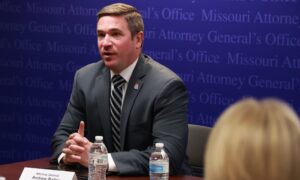If you drop into an elementary reading lesson, you might see kids learning about the long U sound, building their vocabulary or practicing how to read aloud without sounding like robots.
And if you visit Kansas City Public Schools this fall, you should see all students in the same grade learning the same thing.
After all, a push is underway in KCPS to standardize reading lessons and anchor them in evidence about how students learn best.
Around the state, schools are retraining thousands of teachers, replacing outdated reading lessons and identifying students who need extra help.
Missouri is the latest in a string of states to put money and the force of law behind an effort to teach more kids to read.
The strategy hinges on the idea that some teaching methods weren’t working very well. Kids struggled to read, though they were capable of learning. Research — often known as the “science of reading” — pointed to a better way, but wasn’t always heeded.
“Teachers that are coming into the profession just don’t have that science of reading background from universities,” said Connie Moore, director of elementary curriculum at KCPS.
Evidence-based teacher training is “assisting those brand new teachers, even veteran teachers, that have students come with reading deficiencies or specific needs around reading,” she said. “We’re getting students to read on grade level, because that’s the ultimate goal.”
Missouri law changes
A Missouri law adopted in 2022 requires that all public school elementary students get reading instruction that has proved “highly likely to be effective.”
That means the teaching techniques must have been studied by looking at the outcome for large numbers of students, and that they include five key components of reading: phonemic awareness, phonics, fluency, vocabulary and comprehension.
Previously, science of reading proponents say, many students weren’t getting enough phonics instruction. Most kids need to be explicitly taught about sounds, how they relate to letters and how to use that knowledge to decode words.
Meanwhile, students were learning strategies that many now see as damaging — things like using pictures and context to guess words rather than sounding them out.
What a student learned in class could be the luck of the draw, said Megan Mitchell, a K-5 English language arts curriculum coordinator at KCPS.
One teacher might spend most of their time on foundational phonics skills while another might focus on comprehension, she said. But students need systematic instruction in all five areas.
Teachers also need to know how to work with students who need extra help.
“Before, I may have heard the (student’s) error, but just didn’t really have a concrete way to understand where that was coming from,” Moore said. “What’s going on that is causing this student to make this error, and how can I work with them to correct it?”
The law is meant to push schools toward proven strategies.
Changes include standards for educating new teachers. The law also gives the state Department of Elementary and Secondary Education power to recommend curriculum, offer more teacher training and closely track how well young students can read.
Students who don’t score well on reading tests are supposed to receive intensive help.
But putting new education laws into action can be harder than getting them passed, said Torree Pederson, the president and CEO of Aligned, a nonprofit coalition of business leaders pushing for education reform.
“You’re handing it off to an agency that’s already stretched and asking them to do more,” she said. “It’s not an easy task to retrain all the teachers in Missouri.”
Implementing the law
The state doesn’t have the power to mandate curriculum or teacher training, but it is nudging districts in a certain direction.
With $25 million in state dollars and $35 million in federal relief money, the state education department is willing to pay for specific intensive reading training for at least 15,000 teachers.
The training, called LETRS and pronounced “letters,” emphasizes the science of reading and the five reading components Missouri law supports. It can take up to 168 hours over the course of at least two years.
The state also offers grants to replace old curriculum with evidence-based materials. Schools that don’t qualify for the grants can use the state’s list of recommended materials as a guide.
About 11,000 teachers have at least started the training under the state’s current program. Heather Knight, the state’s literacy coordinator, said several thousand more have been trained since 2021 through other state or local programs.
The state originally targeted K-3 and preschool teachers, but opened the training up to fourth and fifth grade teachers as well.
More than 480 of the roughly 550 school districts and charter schools in Missouri are participating. But even districts that appreciate LETRS training aren’t embracing it at the same pace.
KCPS has required the training for early elementary teachers, reading specialists and others, seeing it as a way to comply with the law on evidence-based instruction, Moore said. Practically all teachers in those groups have at least started the training.
North Kansas City Public Schools took a slower, more cautious approach, said instructional coordinator Lisa Friesen.
The training is now encouraged but not required for most teachers, Friesen said. About a third of elementary teachers have registered.
Some of the lessons from LETRS have made their way into the district’s reading curriculum, which is designed in-house and updated yearly.
Momentum to change
Mitchell, the KCPS curriculum coordinator, thinks it was about four years ago when she started to hear about the science of reading.
The news came through research for her job, but also from a science of reading Facebook group and from American Public Media podcast “Sold a Story,” which has helped influence public opinion and inform a wider audience about reading research.
Although much of the research on reading is old, there’s new momentum behind evidence-based teaching. But Missouri is far from the first to try it.
A 2013 law gets credit for the “Mississippi miracle,” where that state’s reading scores dramatically increased. All school districts saw improvement, though gains weren’t even. Several other Deep South states have seen notable gains as well. And Florida, whose 2002 reading legislation inspired Mississippi’s, has among the best reading scores.
In early 2024, Education Week reported that 37 states and the District of Columbia had passed reading legislation in the past decade, most within the past five years, and 17 of them within 2023 alone.
A January 2024 policy analysis from ExcelInEd, a nonprofit founded by former Florida Gov. Jeb Bush, shows nearly all states have adopted some reading policies. Missouri now checks most of the think tank’s boxes.
Those lists don’t include Kansas’ latest literacy law, which Gov. Laura Kelly signed in April.
New curriculum
Companies that produce curriculum and other classroom resources are taking note.
Education company Learning A-Z knew schools would be looking for materials based on the science of reading, in part because of state law changes, President Aaron Ingold said.
So the company, which had focused on supplemental resources, recently got into creating a comprehensive curriculum called Foundations A-Z. It’s on Missouri’s list of recommended resources.
Learning A-Z has changed some of its thinking, Ingold said. It no longer includes “cueing,” an out-of-favor strategy that encourages children to look at context such as pictures and sentence structure to figure out words rather than sounding them out.
Instead, the program includes more phonics instruction and books known as “decodables” that contain words and spelling patterns students have learned.
Moore said the science of reading is an example of how research doesn’t always “trickle down to us in a timely manner.”
But with training and curriculum companies on board, and the expectation that teachers will see gains in the classroom, she thinks it’s more than a passing fad.
“I don’t think it’s something that’s going to come and go in education,” she said.
This article first appeared on Beacon: Missouri and is republished here under a Creative Commons license.![]()
Our stories may be republished online or in print under Creative Commons license CC BY-NC-ND 4.0. We ask that you edit only for style or to shorten, provide proper attribution and link to our website. AP and Getty images may not be republished. Please see our republishing guidelines for use of any other photos and graphics.





